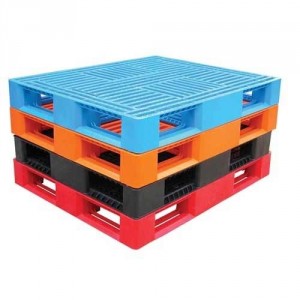 Pallets will continue to be one of the most important tools used to transport materials through the supply chain at least for the next several years, according to a new report issued by an industry consulting group.
Pallets will continue to be one of the most important tools used to transport materials through the supply chain at least for the next several years, according to a new report issued by an industry consulting group.
“World Pallets”, a study conducted and published by the Freedonia Group, determined that the use of pallets will climb nearly 5% per year through 2017 in countries all over the globe, eventually reaching 5.1 billion pallets. This remarkable growth comes after a relatively sluggish growth rate in the use of pallets from 2007 to 2012.
Anticipated Manufacturing Growth
The primary reason for the increased use of pallets is an overall growth in manufacturing, especially in North America and Western Europe, the report states. In the Asia/Pacific region, China will show the largest gain in the use of pallets, accounting for about 20% of all pallets used worldwide.
Not only will there be more pallets used in the supply chain, but the value of those pallets will increase an estimated 7% per year as more manufacturers switch from wooden pallets to the more durable — but more costly — hard plastic pallets. Because these types of pallets have a longer usable life than wood pallets, fewer pallets will be thrown away each year and the overall number of pallets in use will increase, according to the report.
Benefits of Plastic Pallets
Another benefit of plastic pallets is that they will result in reduced product damage during shipping, resulting in improved operating efficiency and lower overall costs. More manufacturers are expected to choose plastic pallets because they are are easier to clean and are better for transporting food, beverage and other products that require contamination to be minimized.
Additional benefits of plastic pallets include being more damage resistant than wooden pallets, having a higher recyclable rate, and the fact that they can be made out of recycled materials.
Despite this, wood pallets will continue to dominate the marketplace through 2017, accounting for approximately 90% of all pallets in use globally, according to the report.
Generally, there will be more pallets in use because the size and scope of manufacturing worldwide is expected to grow during the next few years. Pallet use is relative to the size of manufacturing, warehousing and construction sectors, so as these grow, so does pallet utilization, according to the report.
Pallets for Construction Materials
Pallets used to transport construction materials also is expected to grow over the next several years thanks to an anticipated recovery in construction activity worldwide. Sales of pallets to construction and other non-food and beverage markets will grow the fastest as a percentage, but sales to food and beverage manufacturers will remain the biggest single market through 2017, accounting for more than half of the world pallet demand, according to the report.
The study was based on an examination of historical demand for pallets in 2002, 2007, and 2012. It looked at projected forecasts for pallet use for 2017 and 2022 by material type, market, world region and in the 25 largest industrialized countries. “World Pallets” also examined environmental factors and reviewed industry structure and profiles of global competitors.
